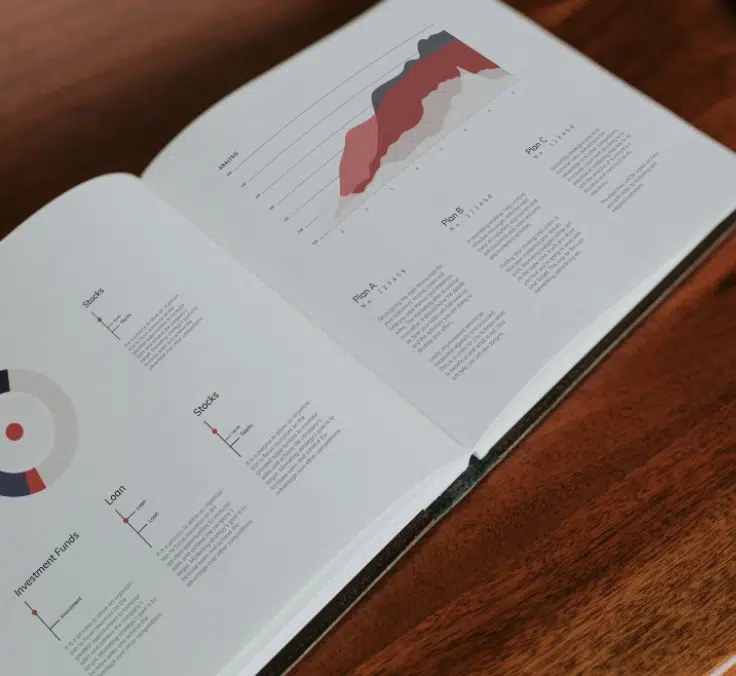ECONOMY| 01.18.2024
Tips for choosing a mutual fund
Once you’ve decided to put your savings to work, a mutual fund is one of the alternatives that anyone with some spare cash to invest could choose. Although the minimum investment required varies depending on the fund you pick, this factor is no really longer a barrier, as nowadays there are funds with an initial investment as low as 10 euros available.
A mutual fund is an extremely versatile product given the wide variety on offer. They come in more or less diversified versions and with exposure to different types of assets, strategies, or geographical areas; greater or lesser risk; higher or lower returns, etc. The options are endless, which is why the difficulty often lies in knowing which of these investment vehicles is best suited to each saver. MAPFRE AM, the MAPFRE Group’s asset manager, has a wide variety of funds that satisfy these requirements.
Understanding the associated risks and doing some careful research before committing to an investment is very important. It’s also worth remembering that this product doesn’t come with any guarantees regarding the amount invested. Diversifying between different types of assets in a single portfolio, or even with different funds, is not a guarantee of future profits, nor are past returns a guarantee of future returns.
With this in mind, first of all you need to be sure about your objective. Most everybody’s instinctive response to this question is to get a return on their investment. So returns will be the main factor you’ll want to check out, although not the only one. At first glance, risk also provides vital information. This means that you should always look at both the returns offered by the fund and the level of risk it exposes an investor to.
Along with the risk-return ratio, there are also other aspects to keep an eye on. And they all provide key information that will help you select the mutual fund that best suits your profile and objectives. Here’s a summary of the most important ones:
Objectives and time horizon
The first factor has to do with you, rather than the product. You need to establish what your financial goals are before making a decision. Generally speaking, these involve a defined time period. Are you looking for a little extra money to supplement your retirement? Are you saving to pay for your child’s education? Do you want to buy a house? The answers to these questions will make it easier to establish whether you should look at a short, medium, or long-term fund.
Risk tolerance
This is closely associated with the first factor. Having defined your objectives and time horizon, your risk tolerance will help identify the fund that’s best suited to you. A conservative profile is typical of somebody who’s pained by, or almost allergic to, market fluctuations. This type of investor will be better off with a fund that’s exposed to less risk for the same return. A moderate profile may be willing to assume a little more risk, but less so than an aggressive profile, where the aim is to maximize profitability, and they’re comfortable with greater exposure to risk.
Having a clear understanding of your risk tolerance and choosing an investment vehicle accordingly will make it easier for you to avoid impulsive decisions during intense periods of markets fluctuations or on rainy days.
All funds are ranked on a scale of 1 to 7 to indicate their risk level: with 1 being the lowest potential risk and 7 being the highest. However, it should be noted that the lowest category doesn’t mean that the investment is risk-free.
Types of fund
There are different types of mutual funds, and they’re classified based on their risk level and the composition of their assets. For example, the most conservative funds include monetary funds, with an average portfolio duration that’s equal to or less than six months, or guaranteed funds, which require the initial investment to be locked up until a certain date.
Fixed income funds only invest in debt instruments and vary depending on the credit quality of the assets (How sure can we be that the borrowers will meet their payment obligations?), while mixed funds come with a medium risk level, as they diversify their investments between fixed income and equities. Generally speaking, risk increases in proportion to the percentage of investment in stocks, although the potential return also increases. Equity funds are riskier since they invest most of their assets in stocks.
The range of asset types is immense: fixed income spans local or government debt; emerging or developed countries; corporate debt issued by companies, etc. In equities, the fund might be exposed to specific geographical areas or the entire world, or to different activity sectors or a specific field. They could focus on the biggest companies in the world or look for smaller companies, and so on.
Past performance
As indicated above, although past performance is no guarantee of future performance, analyzing the fund’s track record in returning profits (or losses…) provides useful information about its consistency and performance under different market conditions. With this in mind, it’s interesting to see how the fund does during the present year, but also (and most importantly) how it has performed over the past three, five, and 10 years.
It’s also important to measure these returns against a representative index in its category or other benchmark, which will serve as an objective reference to understand how the investment has performed. It’s also advisable to do so over a period of at least three years, in order to obtain a better perspective of whether portfolio management is effective.
Fees
The costs associated with a mutual fund will have a direct impact on the profits obtained. The objective here isn’t about finding the cheapest fund out there – it’s more about knowing which fund has the most competitive fees and offers the best quality.
Standard fees include management and deposit fees, which are deducted each day from the fund’s net asset value (the value of each unit calculated at the end of each day of trading, dividing the assets by the total number of units). It’s also worth checking whether there’s an initial subscription fee, which is charged up front when you buy into the fund, or a redemption fee, which is charged when you cash out your investment.
Fund management
The fund manager’s experience and skills are crucial to long-term success, as is their investment philosophy or strategy. Checking for recent changes in fund management and portfolio rotation can be an indicator of the fund’s ability to meet market challenges. Also, you can check whether the managers are shareholders in the fund, which will give you an idea about how aligned their interests are with those of the investors. Broadly speaking, managers that are direct shareholders will have more reason to be dedicated to maximizing returns and preserving the value of the fund.
You can also look at the income or profit distribution policy, as this can have a direct impact on cash flows. Some investors prefer funds that automatically reinvest income (accumulation fund), while others look for regular income (distribution fund).
Assets under management
The volume of assets in a mutual fund can affect the manager’s ability to make quick decisions and leverage opportunities provided by the market. A fund that’s too large may have difficulty maintaining flexibility and efficiency, while one with too few assets may have difficulty diversifying. Also, the lower the liquidity, the lower the ability to handle redemption requests from investors without having to hastily sell assets on the market.
Considering these aspects when choosing a mutual fund is essential when it comes to maximizing returns, minimizing risks, and ensuring that your investments are aligned with your financial objectives over time. Always remember to review the information in the investment fund file held by managers and marketing institutions, as well as the Key Investor Information Document (KIID) they’re required to provide, which contains all the necessary and relevant information about the product.
Finally, remember that a mutual fund shareholder only has to pay taxes when they redeem funds, in other words, when they sell their shares. The gains or losses that the investor would make by redeeming their holding in a fund, whether in full or in part, is considered a capital gain or loss for the purposes of personal income tax and is included in the savings tax base.
RELATED ARTICLES:




